- These journals were first published on June 30, 2016 and have been around since then. The biggest characteristic of these journals is that they are English-language journals published for international visibility and are open access (CC-BY) journals. The value of this publishing philosophy is that the academic achievements of researchers from non-English speaking countries such as Northeast Asia can be delivered to “researchers of various ethnicities in more distant countries” and ultimately contribute to the academic development of the Northeast Asian region. Therefore, these journals are provided as open access (CC-BY) on all online platforms such as EBSCO, ProQuest, ExLibris, Google, KCI, and Naver Academic Information, making them an option that can be more easily accessed by researchers from low-income countries as well as more researchers internationally. This direction is a positive inspiration that increases the value of the region in the international academic ecosystem by reborn as a “bridgehead” where the “region” can communicate with the “world.”
- These journals have a clear goal of public contribution that leads to the globalization of excellent regional research, and this can be said to have the potential to show hundreds of times more indexes and citations compared to journals limited to regional languages when the journal aims for internationalization (198 countries). This is a direct reflection of the international academic ecosystem where the impact can be expanded further when the original text is published in English and in an open access (CC-BY) format, and this corresponds to the publication policy of this journal. The validity of this publication system is that compared to advanced academic markets such as the United States and Europe (EU), the opening of the academic market in Northeast Asia, including Korea, Japan, and China, has been closed so far, but it can be said to be a meaningful start in light of the accelerating international integration and growth. Therefore, we hope that this journal can be reborn as a healthy academic influence that can be further enhanced as one axis of the growth of Northeast Asia’s ‘soft power’.
Publish with us
- In order to maintain the readability and quality of this journal, we provide not only the “Editorial Guidelines” but also the “Editorial Manual” that easily explains the contents of the guidelines to all members and potential authors, thereby supporting the improvement of editing perfection. In addition, the editorial staff goes beyond the boundaries of simple academic service and is professional and systematic, and can be said to “secure neutrality” in the area of review management. This maintains the neutrality of author and reviewer bias and the basic requirements that are in line with the academic purpose, and more strictly maintains the “paper publication rate” management. In addition, all academic journals undergo a five-step review process, and it contributes not only to research ethics issues but also to the “quality of manuscripts,” and reflects a democratic system such as the disclosure of evaluation opinions including the objection procedure.
- This journal is an English journal, and except for some authors, English is not their native language, so the readability of the published journal in English is very important. To solve this problem, English grammar and readability are reviewed at the native speaker level not only in the double blind peer review but also in the manuscript editing review process. The editorial committee’s efforts for ‘readability’ are intended to effectively convey the author’s research results and clearly understand the meaning so that readers can easily grasp the importance of the research. This can increase the reliability of the arguments argued by the author in the paper, and this detailed editing and proofreading process leads to an increase in the reliability of this journal, which in turn leads to academic achievements and an increase in the number of citations.
- In addition, in order to allow the reviewers to visually review the editing guidelines for manuscript writing, the references table of contents is clearly divided into “research papers, dissertations, conference presentations, and others,” and such publication cases can be found in all recently published manuscripts. This follows the international direction that the referenced references in the journal should be “reviewed materials” and “materials for which citation indexes can be calculated” from an international perspective. Accordingly, the journal recommends that the ratio of research papers in the references in all published papers be at least 80% for the authors, and it can be confirmed that this consensus on the publication direction is maintained in the entire actually published manuscript.
Journal Titles

International Journal of Crisis & Safety
ISSN 2189-7603
Area 1. Life Safety
Area 2. Social Issues
Area 3. Health Intervention
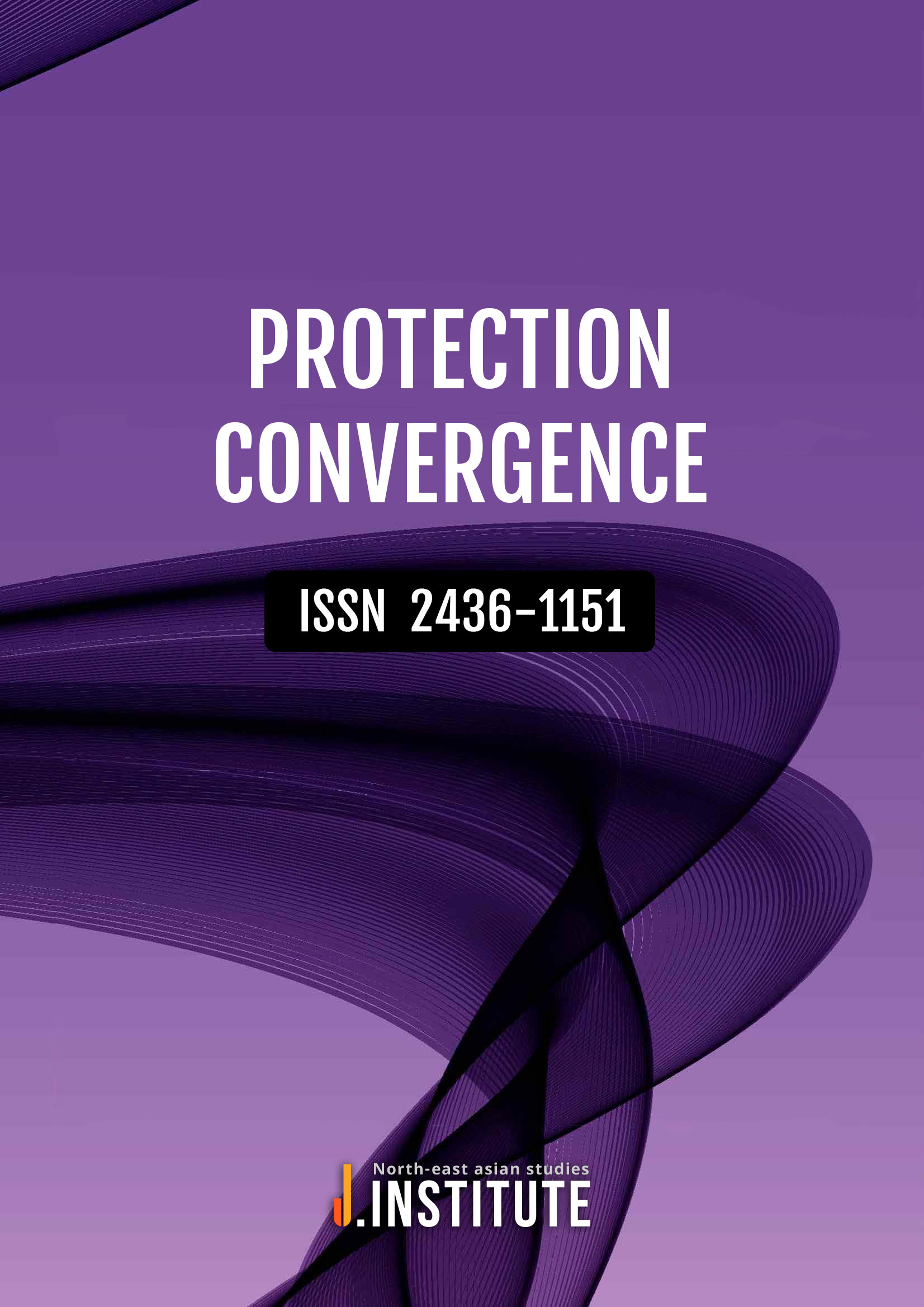
Protection Convergence
ISSN 2436-1151
Area 1. Consilience Human Protection
Area 2. Beauty & Healthcare
Area 3. Progressive Arts
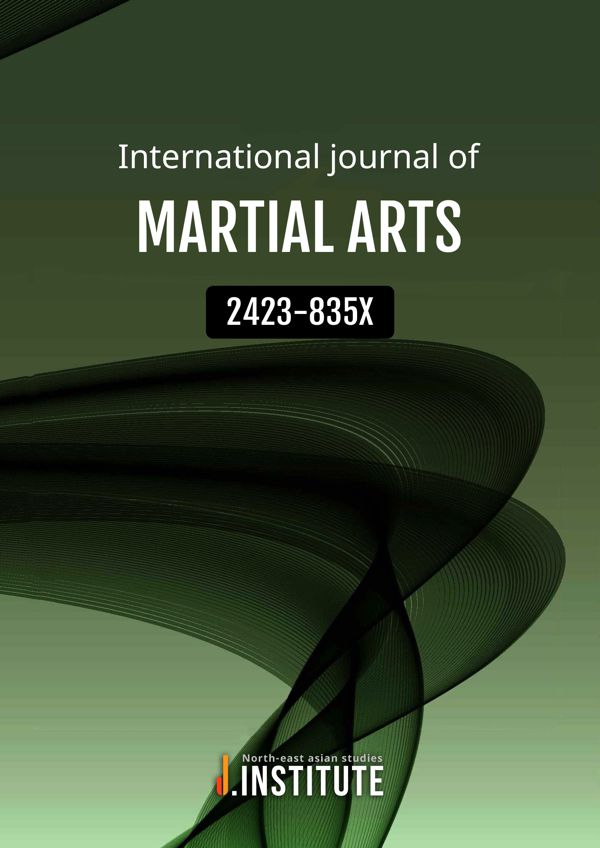
International Journal of Martial Arts
ISSN 2423-835X
Area 1. Martial Arts
Area 2. Sport
Area 3. Tradition and Culture
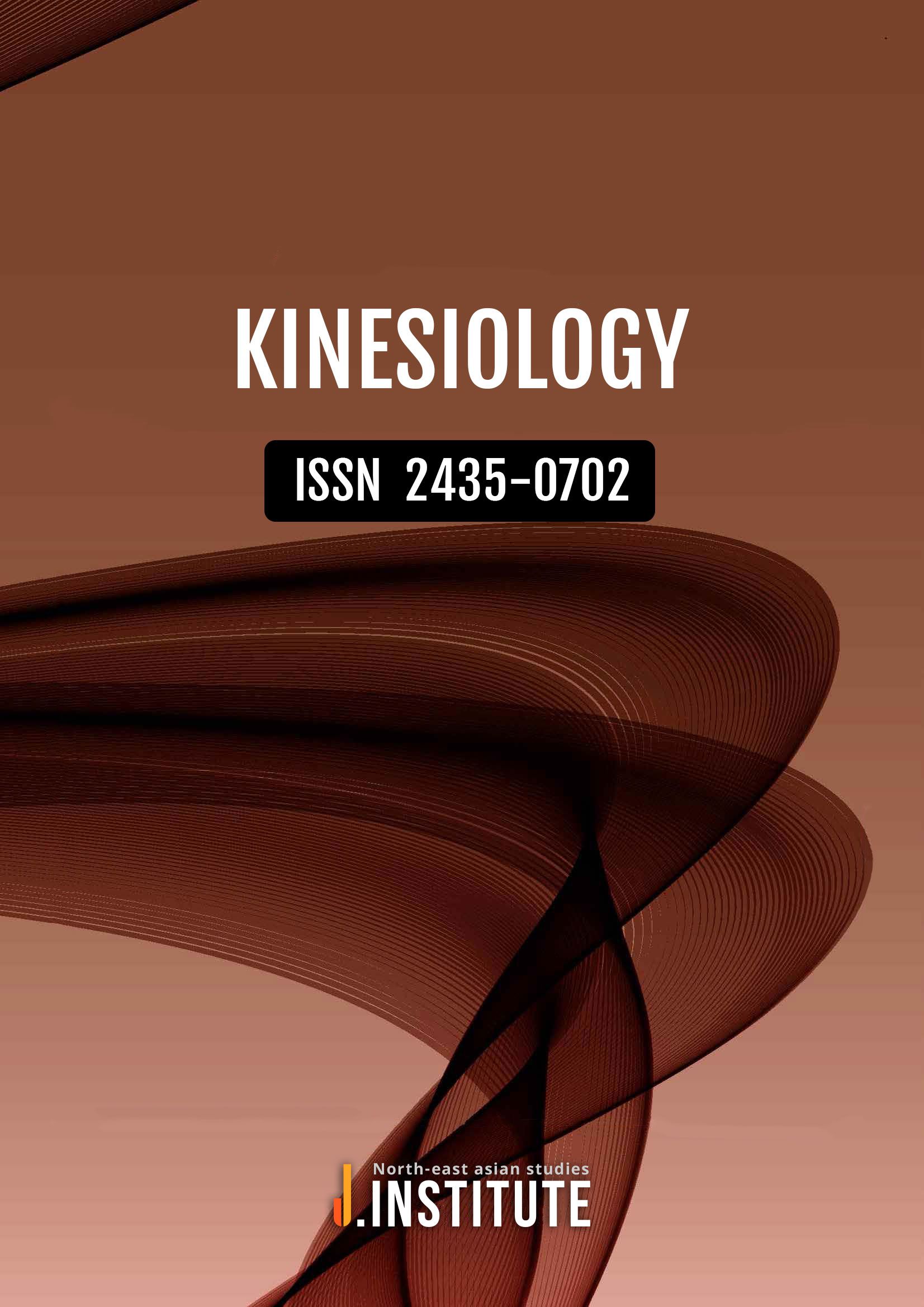
Kinesiology
ISSN 2435-0702
Area 1. Sport
Area 2. Exercise Prescription
Area 3. Body Care Therapy
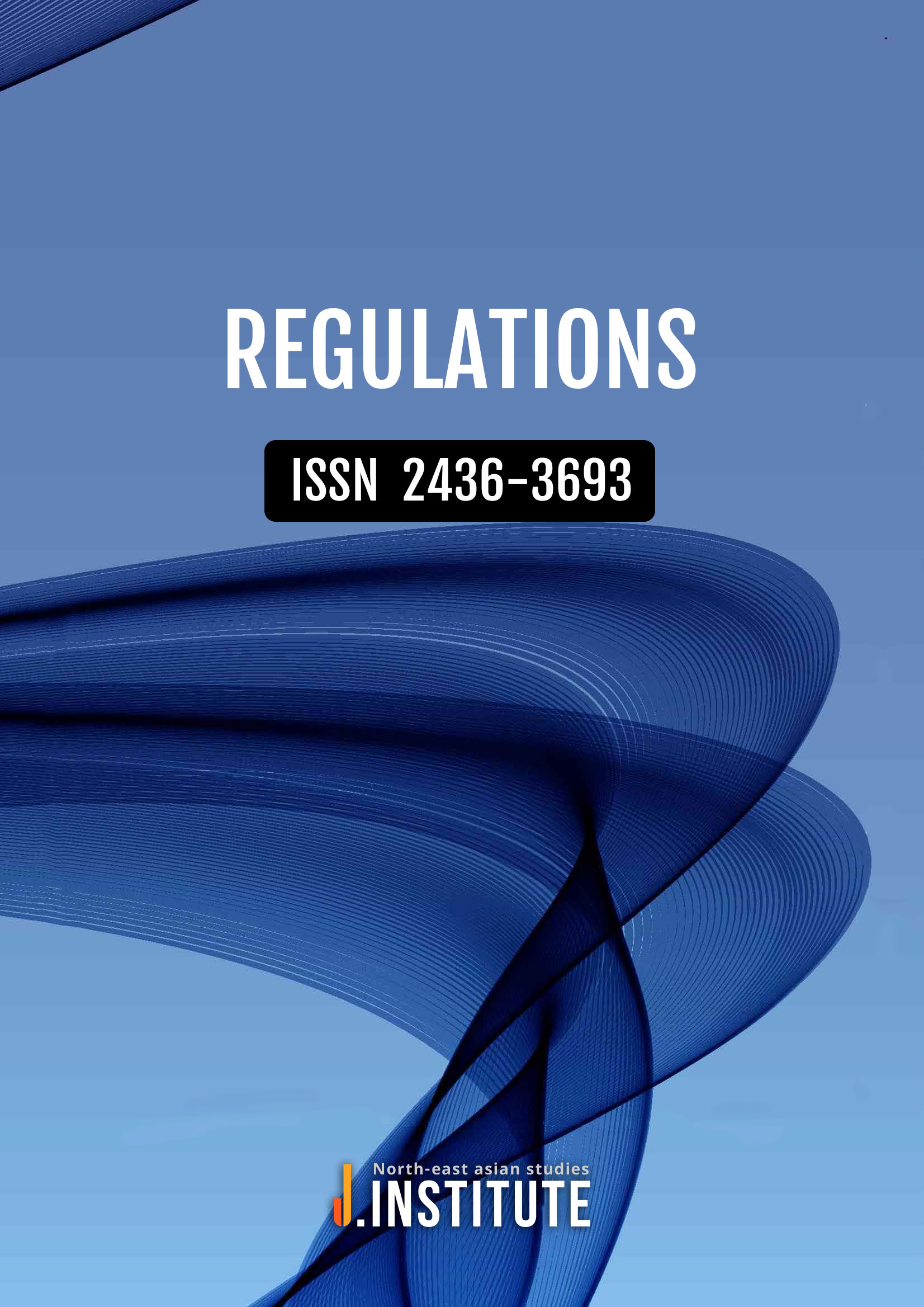
Regulations
ISSN 2436-3693
Area 1. Life and Behavior
Area 2. Social Culture
Area 3. Social Stability and Prosperity
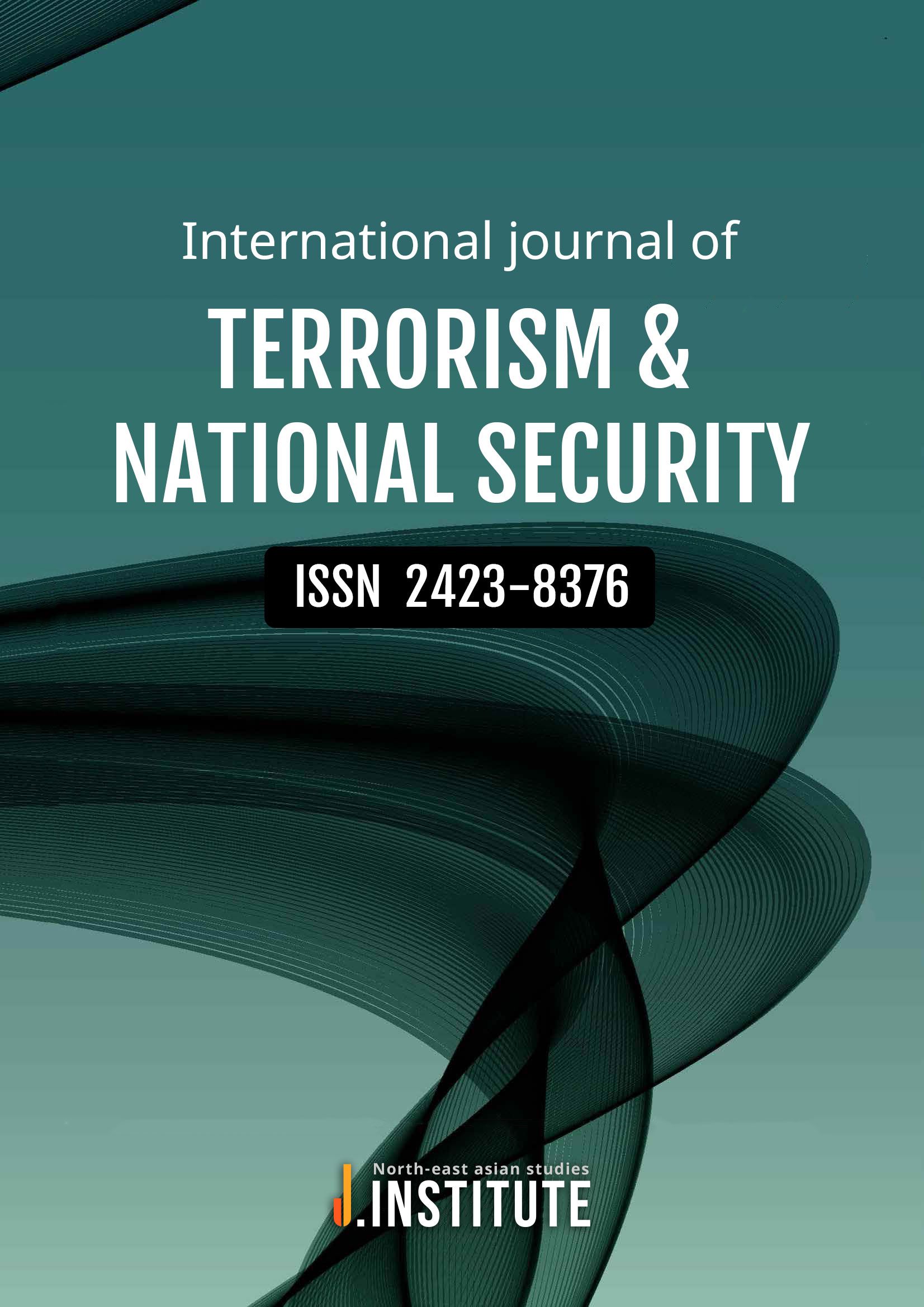
International Journal of Terrorism & National Security
ISSN 2423-8376
Area 1. Comprehensive Threat
Area 2. Intelligence Service
Area 3. Strategy and Forecast
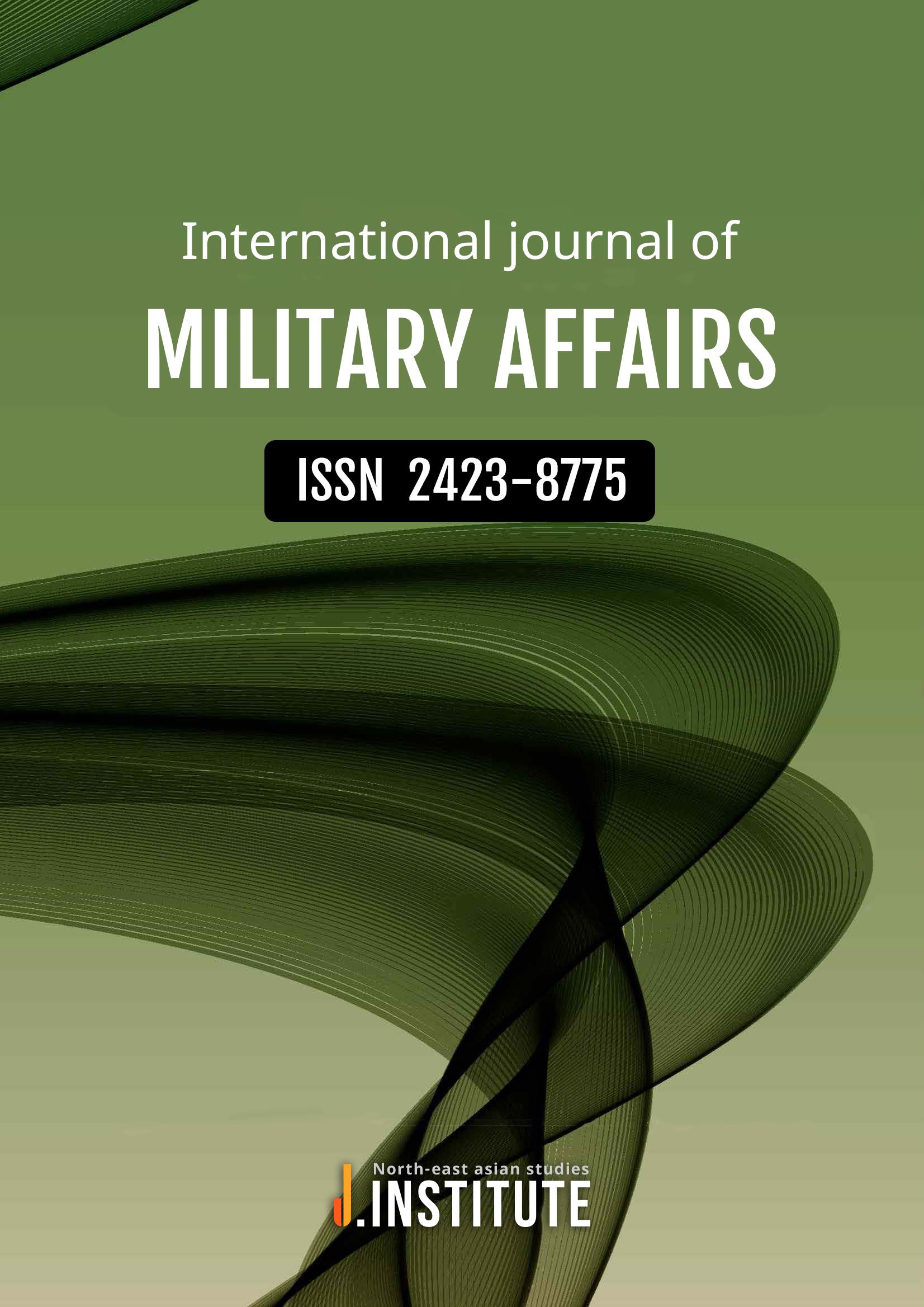
International Journal of Military Affairs
ISSN 2423-8775
Area 1. National Security
Area 2. National Defense
Area 3. Nation Dispute
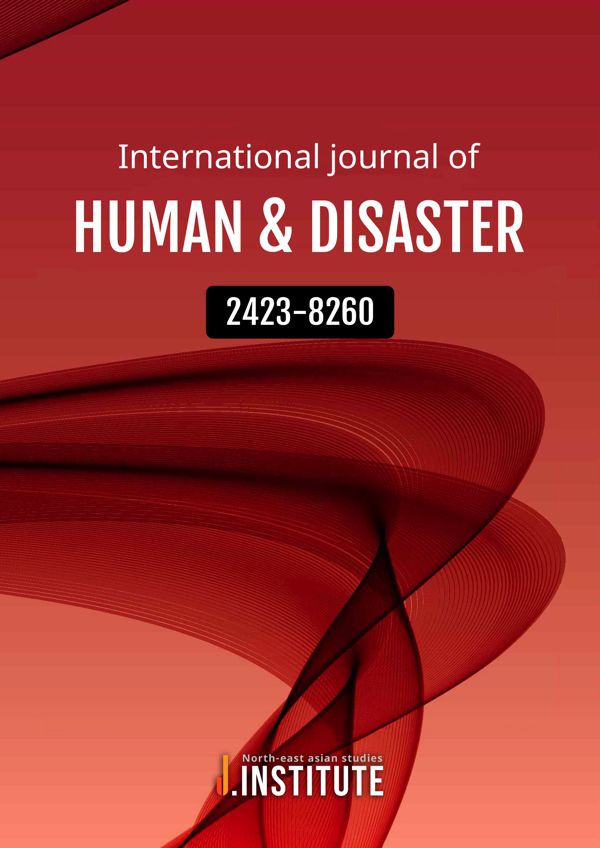
International Journal of Human & Disaster
ISSN 2423-8260
Area 1. Human and Life
Area 2. Disaster
Area 3. Social Value
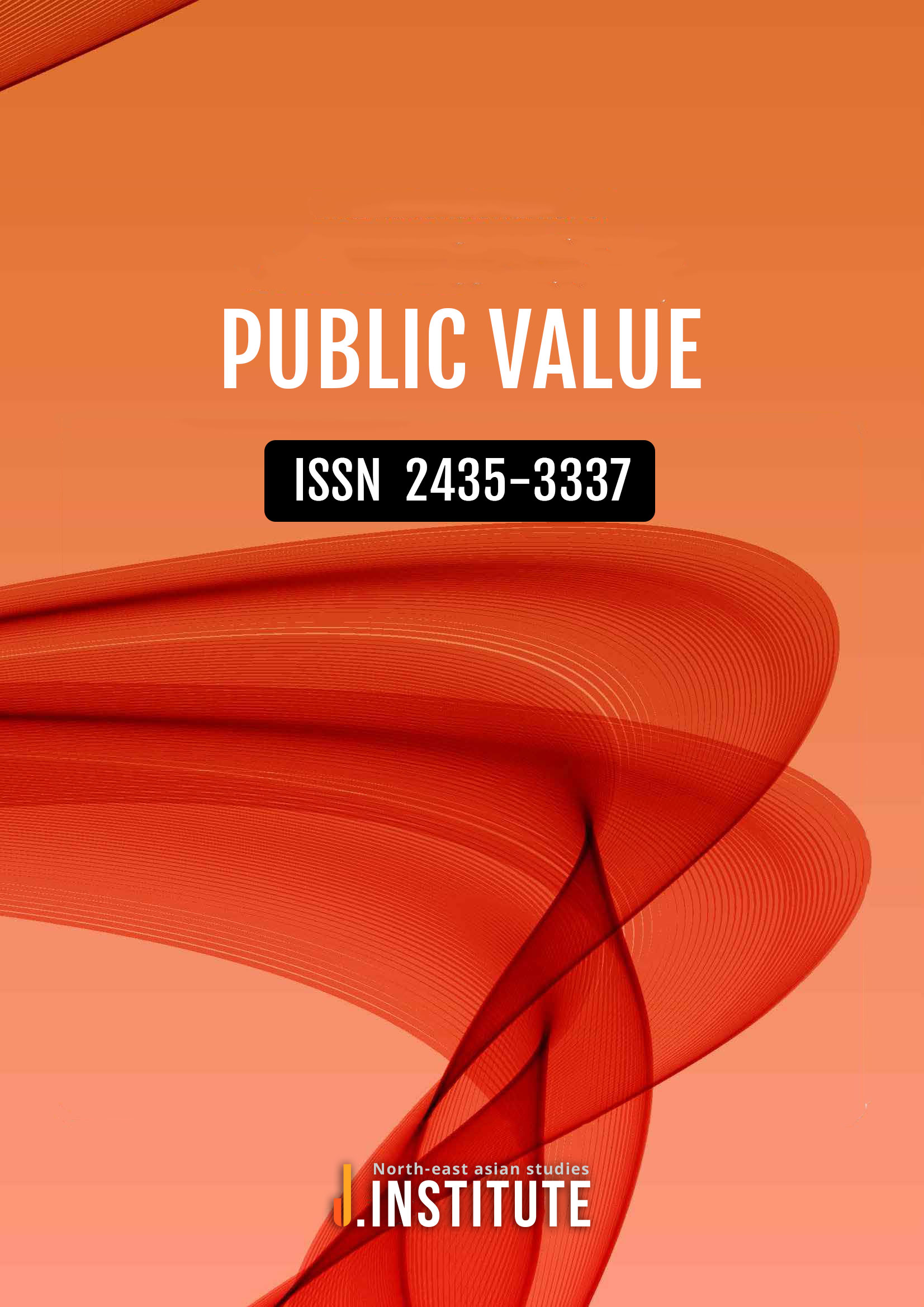
Public Value
ISSN 2435-3337
Area 1. Value of Life
Area 2. Cultural
Area 3. Humanities and Arts
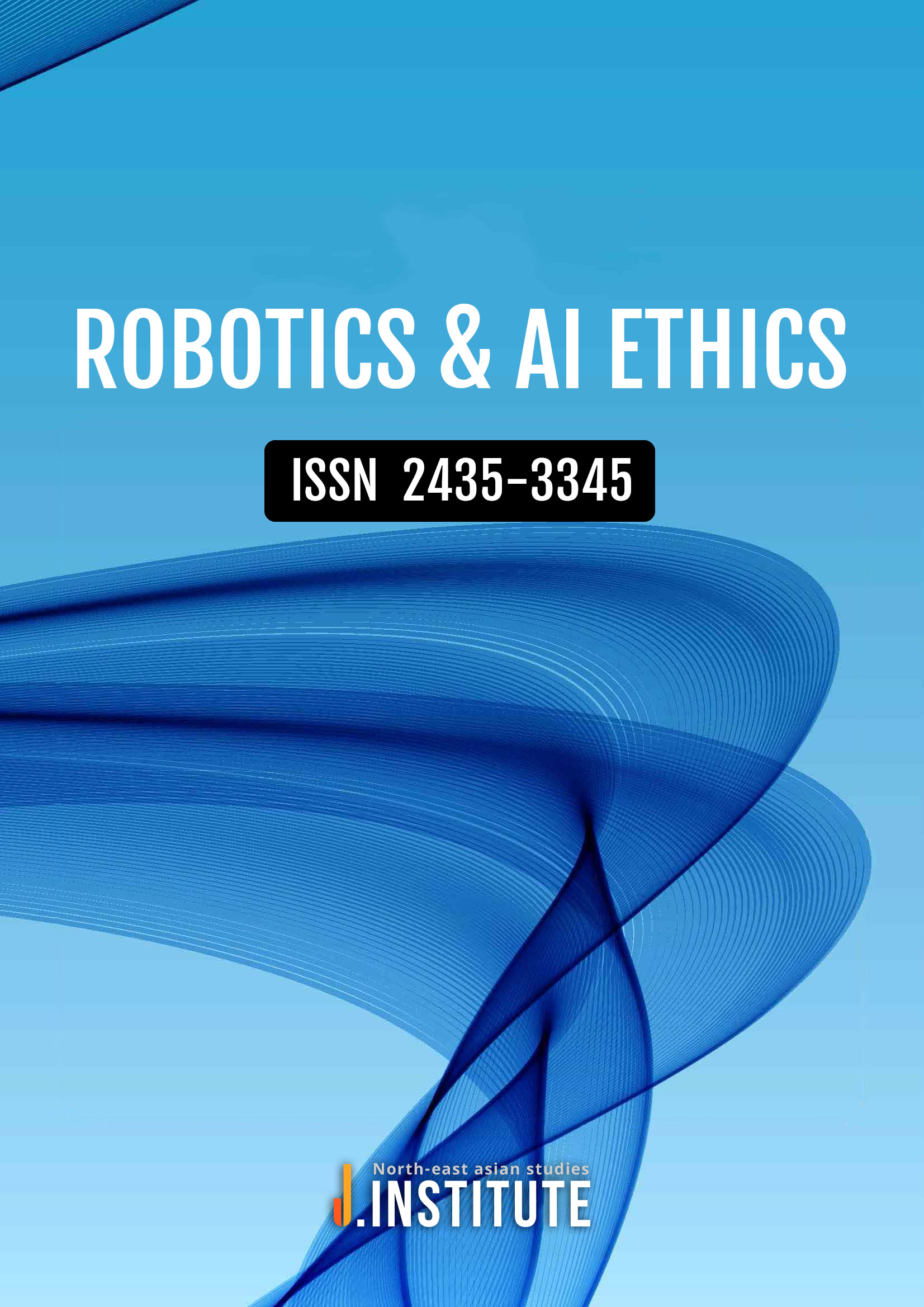
Robotics & AI Ethics
ISSN 2435-3345
Area 1. Artificial Intelligence Other Topic
Area 2. Social Innovations and Phenomena
Area 3. Ethical Promotion
Admission & Submission Form
Submit Your Paper
- inquiry@j-institute.org
- Admission Form (In case of first submission)
- Submission Form
- Manuscript Paper
- Other Related Data
Paper Submission Ethics
- Statement of Informed Consent and Institutional Review Board Approval Copies of written informed consent documents should be kept for studies on human subjects, which includes identifiable information or sensitive information. For clinical studies of human subjects, a certificate, agreement, or approval by the Institutional Review Board (IRB) of the author’s institution is required. If necessary, the editor or reviewers may request copies of these documents to resolve questions about IRB approval and study conduct.
- Statement of Human and Animal Right Clinical research should be done in accordance of the Ethical Principles for Medical Research Involving Human Subjects, outlined in the Helsinki Declaration of 1975 (revised 2013). Clinical studies that do not meet the Helsinki Declaration will not be considered for publication. Human subjects should not be identifiable, such that patients’ names, initials, hospital numbers, dates of birth, or other protected healthcare information should not be disclosed. For animal subjects, research should be performed based on the National or Institutional Guide for the Care and Use of Laboratory Animals, and the ethical treatment of all experimental animals should be maintained. [Full-Text of Helsinki Declaration]
- Conflict of Interest Statement The corresponding author must inform the editor of any potential conflicts of interest that could influence the authors’ interpretation of the data. Examples of potential conflicts of interest are financial support from or connections to companies, political pressure from interest groups, and academically related issues. In particular, all sources of funding applicable to the study should be explicitly stated.
Plagiarism Program
Review Progress
Step 1
Editorial Review
- Determine whether the academic domain of the submitted paper is included in this journal.
- The checks the plagiarism rate of submitted manuscripts using the Plagiarism Program and allows only accepted manuscripts to proceed with Step 2. “Double Blind Peer Review”.
- If there is a complaint by the author, the review of the Editor in Chief shall be followed.
Step 2
Double Blind Peer Review
- The Editor-in-Chief selects reviewers for submitted papers in consultation with the Editorial Board Member, and the assigned reviewers must be evaluated objectively according to the following criteria.
- Published if the average of the two reviewers is calculated and the score is 85/100. However, after going through a Review-Form Reflection Review reflecting the opinions of the reviewers and a Manuscript Editing Review reflecting the editing regulations, the final publication goes through the procedures of Open & Hybrid Review.
- Creativity.
- The paper has original value as a theme that can be accepted internationally.
- The paper must state proper previous studies and explain the differentiation between them.
- Methodology.
- The paper uses a methodology suitable for the purpose of the research.
- The paper has reliability, and validity according to the methodology.
- Logical.
- This paper has a logical author’s argument and the results are concrete and clear.
- This paper is faithful in English grammar, expression, and legibility.
- Practical.
- This paper is utilization value and practical.
- This paper stimulates further additional research.
Step 3
Review-Form Reflection Review
- The evaluation of whether the content of the Double Blind Peer Review is accurately reflected in the final revision.
- In the case of submitting an English Extended Version, the author shall comply with Article 13 of the Regulations on Paper Contribution, including the scope and requirements, submission procedures, Editorial Board review, and acknowledgment. When preparing the ‘Peer-Review Reflection’, the author must address not only the comments provided by the Double Blind Peer Reviewers but also present the expanded content of the English Extended Version, including the title, abstract, discussion, and suggestions.
- The Peer-Review Reflection Review prepared by the author must undergo a verification and cross-checking process. If it does not meet the criteria of an international, expanded version, publication shall be denied.
- If the manuscript is rejected at this stage, the author will be notified by email. However, in the absence of any special notice, the review will proceed to the next stage.
Step 4
Manuscript Editing Review
- Manuscript professional edit manager conduct proofreading and editing. In this process.
- We have a full-time editorial team (manuscript proofreading) to maintain the scientific and thorough editorial status of the entire journal, and we have organized it to maintain the international top-level status in editing.
- In the manuscript editing review process, the editorial department introduces and implements a double review system to maintain excellent editing completeness and digital technology-integrated editing, such as coding individual Doi addresses of academic journals and individual Doi addresses of references. At this time, if serious omissions or errors in manuscript editing are found, the author will be notified of the fact and the manuscript may be carried forward without proceeding to the next review stage. The manuscript editing review criteria are as follows.
- Structure
- This paper consists of approximately 10 to 12 Pages.
- The Abstract was divided into the Purpose, Method, Result, and Conclusion of the study and was written in about 20 lines.
- The paper should include structured Tables, Figures, and titles.
- This paper’s References have included more than 30 journal articles cited.
- This paper References the proportion of Non-citable articles less than 10%.
- Format
- The paper contains 5 keywords, with the first letter of the word capitalized.
- The large table of contents is capitalized with the first letter of the word,
and the small table of contents is capitalized only for the first letter of the sentence. - The first letters of all words in the bibliography are capitalized.
- The journal name is written in full name rather than an abbreviated notation in the reference list.
- The references, journal article the DOI Address are accurately written at the bottom of the citation data.
Step 5
Open & Hybrid Review
- Open & Hybrid Review is sent to the registered e-mail of all members 15 days before publication.
- Manuscripts are sent to the author, the editorial board of the Northeast Asian Studies Journal Institute (J-INSTITUTE), and all members to check if there are any problems with the published paper. At this time, all members can convey various opinions, including research ethics issues regarding the paper, to the editor-in-chief.
Review-Form
Withdrawal
- Withdrawal of a submitted manuscript must be confirmed by the consent of all the submitted manuscript authors, and will be withdrawn by submitting a statement of reason.
- However, who have completed the prescribed membership procedures, and membership cannot be withdrawn after the membership procedures.
Copyright and Licensing
- The Copyright and Licensing of Articles in the Published Journal belong to Northeast Asian Studies Journal Institute (J-INSTITUTE).
- Articles of Association (Purpose) Aims to Contribute to the Globalization of Local Researchers by Increasing International Visibility into Academic Achievements of Researchers from Northeast Asia. Therefore, We provide Manuscripts with Open Access.
- Certify that it is an open access journal from Vol. 1 (No. 1) on June 30, 2016, when it was first published.
- Journal published by J-INSTITUTE is an open access journal. All articles are published under the terms of the Creative Commons Attribution License (CC-BY). This license permits unrestricted use, distribution, and reproduction provided that the authors, citation details and publisher are clearly identified. For any reuse or distribution, make clear that the article is made available under a Creative Commons Attribution License (CC-BY).
- Authors may keep copies of their article in an institution of their choice or in other repositories.
Revenue Sources
- Admission Fee
- Publication Fee
Article Processing Charge (APCs)
- Open Access Policy: Journals is an open access journal, therefore, the articles will be freely available to everyone, including those who don’t subscribe to Journals. To cover the cost of publishing, authors pay an article submission, publication and admission membership fee. See fees in the page of submission paper(However, Paper submission and review fees are free of charge).
- Benefits of High Visibility: The article is made freely available via websites. Self-archiving policy: Authors can post the final, published PDF of their article on a website, institutional repository, or other free public server.
- Conflict of Interest: We do not receive any funding support from any government, company, association and organization, which means we are independent of any conflicts of interest in the direction of publication of the journal.
| Admission Admission Membership Registration is a Basic Condition for Submitting a Papers Members are Eligible to Submit Papers to All Journal Titles by J-INSTITUTE |
Publication
1. Archive 2. Manuscript proofreading 3. Certificate |
|
|---|---|---|
| Lifetime Member In addition to the researcher's academic ability, the reputation of the academic community, the active participation in academic activities, and the sustainability of academic activities, the membership is approved as lifetime members based on a comprehensive judgment. The membership is maintained as a permanent lifetime member based on the date of admission. |
500USD | 250USD |
| Family Member All authors who submit manuscripts are granted full membership or higher, and membership is approved as a full member of the Society after objectively judging whether they have completed a degree program, their academic ability, and the level of contribution of the submitted manuscript. Membership is maintained until the end of the year based on the date of admission. |
100USD | |









